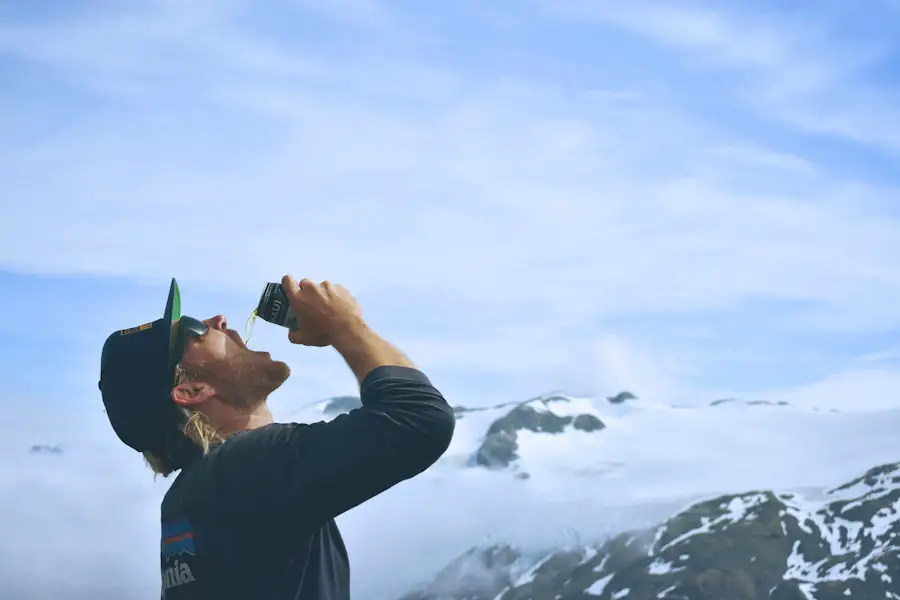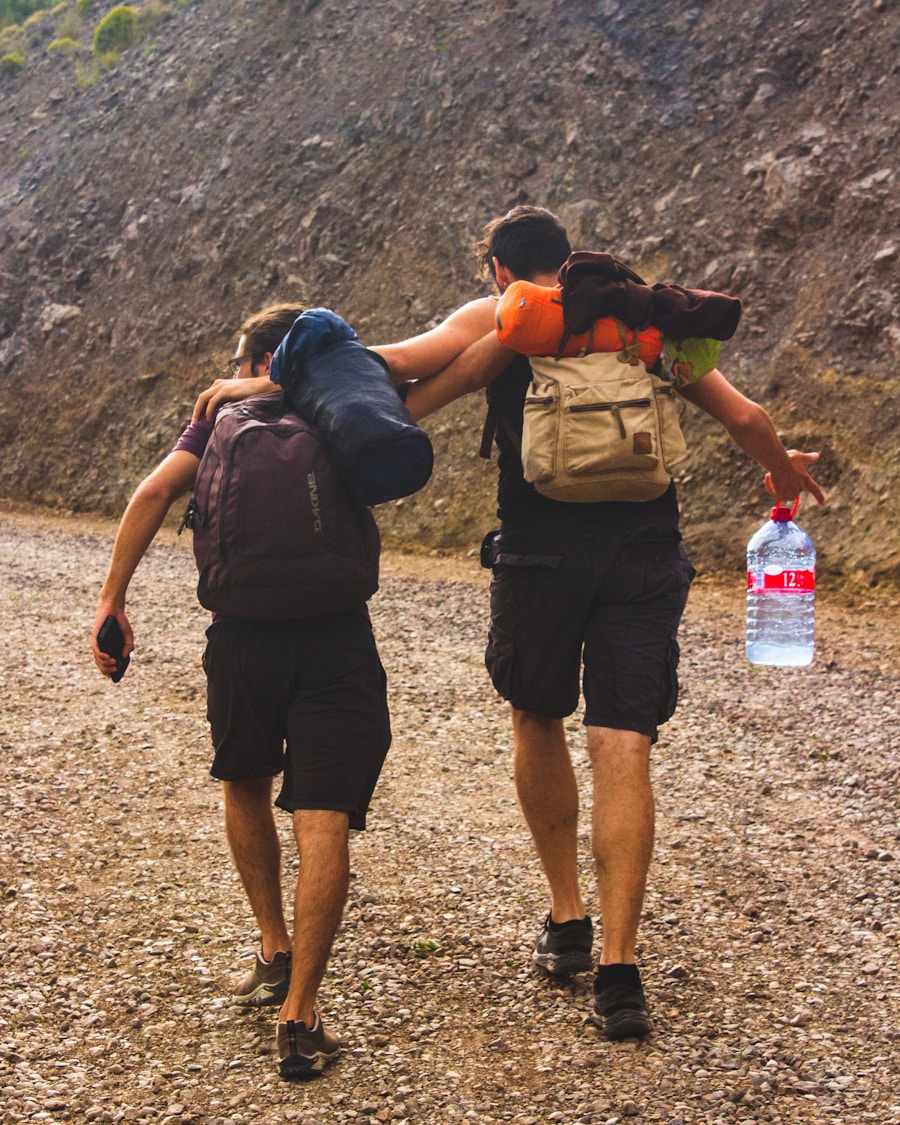Hydration is a critical component of outdoor activities, particularly hiking, where the body is subjected to physical exertion and environmental stressors. When hiking, the body loses water through sweat and respiration, and if these losses are not adequately replenished, it can lead to dehydration. Dehydration can impair physical performance, reduce cognitive function, and increase the risk of heat-related illnesses.
Studies have shown that even a 2% loss in body weight due to dehydration can significantly affect endurance and strength, making it essential for hikers to maintain optimal hydration levels throughout their journey. Moreover, the importance of hydration extends beyond mere physical performance. It plays a vital role in regulating body temperature, lubricating joints, and transporting nutrients.
When hiking in high altitudes or hot climates, the risk of dehydration increases due to higher rates of fluid loss. The body’s ability to cool itself through sweating becomes compromised when hydration levels drop, leading to heat exhaustion or heat stroke. Therefore, understanding the importance of hydration is not just about enhancing performance; it is also about ensuring safety and well-being while enjoying the great outdoors.
Key Takeaways
- Proper hydration is crucial for hiking as it helps maintain energy levels, regulate body temperature, and prevent dehydration-related issues.
- Choosing the right hydration gear, such as a hydration pack or water bottle, is essential for staying hydrated during a hike.
- Pre-hike hydration strategies include drinking plenty of water the day before, avoiding alcohol and caffeine, and consuming hydrating foods like fruits and vegetables.
- During a hike, it’s important to drink water regularly, even if you don’t feel thirsty, and to monitor urine color to gauge hydration levels.
- Hydration-boosting foods and snacks like water-rich fruits, electrolyte-rich drinks, and salty snacks can help replenish fluids and electrolytes lost during a hike.
Choosing the Right Hydration Gear
Traditional Water Bottles
Water bottles are a traditional choice and come in various materials such as stainless steel, plastic, and glass. They are easy to refill and can be carried in a backpack or attached to a belt. However, they may require frequent stops for refilling, which can disrupt the flow of a hike.
Hydration Packs: Convenience and Hands-Free Design
Hydration packs have gained popularity among hikers for their convenience and hands-free design. These packs typically feature a reservoir that holds water and a tube that allows for easy sipping while on the move. This design encourages regular hydration without the need to stop and fumble with a bottle.
Choosing the Right Hydration Pack
When choosing a hydration pack, it’s essential to consider factors such as capacity, fit, and additional features like pockets for storing snacks or gear. A well-fitted hydration pack can distribute weight evenly across the back, reducing strain during long hikes.
Pre-Hike Hydration Strategies

Preparing for a hike involves more than just packing gear; it also requires strategic planning regarding hydration. Pre-hike hydration is essential for ensuring that the body starts off in an optimal state. Ideally, hikers should begin hydrating at least 24 hours before their hike by consuming adequate fluids throughout the day.
Water is the best choice, but electrolyte-rich beverages can also be beneficial, especially if the hike is expected to be strenuous or if temperatures are high. In addition to drinking fluids, consuming foods with high water content can also aid in pre-hike hydration. Fruits such as watermelon, oranges, and strawberries are excellent choices due to their high moisture content.
Incorporating these foods into meals leading up to the hike can help ensure that the body is well-hydrated before setting out on the trail. It’s also advisable to avoid excessive caffeine or alcohol consumption in the days leading up to a hike, as these substances can contribute to dehydration.
During-Hike Hydration Guidelines
| Activity Level | Fluid Intake | Frequency |
|---|---|---|
| Low intensity hiking | 4-8 ounces | Every 20 minutes |
| Moderate intensity hiking | 4-8 ounces | Every 15 minutes |
| High intensity hiking | 4-8 ounces | Every 10 minutes |
Maintaining hydration during a hike is crucial for sustaining energy levels and preventing fatigue. A common guideline is to drink about half a liter (17 ounces) of water per hour during moderate activity in moderate temperatures. However, this can vary based on individual needs, intensity of the hike, and environmental conditions.
Hikers should pay attention to their bodies and drink when they feel thirsty; however, relying solely on thirst can sometimes lead to inadequate fluid intake. To optimize hydration during a hike, it’s beneficial to establish a routine for drinking water. Setting reminders or taking sips at regular intervals can help ensure that fluid intake remains consistent throughout the hike.
Additionally, incorporating electrolyte drinks can be advantageous during longer hikes or in hot weather conditions. These drinks help replenish lost salts and minerals that are essential for muscle function and overall hydration balance.
Hydration-Boosting Foods and Snacks
In addition to drinking fluids, certain foods can significantly enhance hydration levels while hiking. Foods with high water content not only provide hydration but also offer essential nutrients that support energy levels during physical activity. For instance, snacks like cucumbers, celery sticks, and grapes are excellent choices due to their high moisture content and low calorie count.
These foods can be easily packed and consumed on the go without requiring extensive preparation. Moreover, incorporating snacks that contain electrolytes can further support hydration efforts. Trail mixes that include nuts and dried fruits provide healthy fats and carbohydrates while also offering some level of sodium and potassium—key electrolytes lost through sweat.
Energy bars that are specifically designed for athletes often contain added electrolytes and can serve as both a source of energy and hydration support during long hikes.
Post-Hike Hydration Recovery

The importance of hydration does not end once the hike is over; post-hike recovery is equally vital for restoring fluid balance in the body. After exertion, it’s essential to rehydrate adequately to facilitate recovery processes such as muscle repair and replenishment of glycogen stores. Drinking water immediately after finishing a hike is crucial; however, it’s also beneficial to consume beverages that contain electrolytes to replace those lost during physical activity.
In addition to fluids, consuming a balanced meal post-hike can further aid in recovery.
Foods rich in carbohydrates help replenish glycogen stores while protein supports muscle repair. Including hydrating foods like smoothies made with yogurt and fruits can provide both hydration and essential nutrients needed for recovery.The combination of fluids and nutrients will help restore energy levels and prepare the body for future hikes.
Hydration Safety Tips for Hiking
Ensuring proper hydration while hiking involves not only drinking enough fluids but also being aware of safety tips that can prevent dehydration-related issues. One key safety tip is to monitor urine color; pale yellow urine typically indicates adequate hydration, while dark yellow or amber suggests dehydration. Hikers should also be aware of environmental factors such as temperature and humidity that can affect fluid loss rates.
Another important consideration is acclimatization when hiking at higher altitudes. As elevation increases, the air becomes drier and cooler, leading to increased fluid loss through respiration. Hikers should take extra precautions by increasing their fluid intake before and during hikes at altitude to counteract these effects.
Additionally, recognizing early signs of dehydration—such as dizziness, fatigue, or headache—can prompt timely action to rehydrate before more severe symptoms develop.
Hydration Mistakes to Avoid while Hiking
While many hikers understand the importance of staying hydrated, several common mistakes can undermine their efforts. One prevalent mistake is waiting until feeling thirsty to drink water; by this time, dehydration may have already begun to set in. Instead of relying solely on thirst cues, hikers should adopt a proactive approach by drinking regularly throughout their hike.
Another mistake is underestimating fluid needs based on weather conditions or hike intensity. Hikers often assume they need less water on cooler days or during less strenuous hikes; however, even mild exertion in cooler temperatures can lead to significant fluid loss through sweat and respiration. It’s crucial to adjust fluid intake based on individual needs rather than external conditions alone.
Additionally, some hikers may overlook the importance of electrolyte balance during long hikes or strenuous activities. Relying solely on water without replenishing lost electrolytes can lead to imbalances that affect muscle function and overall performance. Incorporating electrolyte-rich foods or drinks into the hiking regimen can help prevent these issues.
By understanding these aspects of hydration—its importance before, during, and after hikes—hikers can enhance their outdoor experiences while safeguarding their health and performance on the trails.
If you’re planning a hiking trip, it’s important to stay hydrated to ensure you have enough energy and stamina to enjoy the journey. One helpful article to check out is “Best Time to Travel to Santa Fe: A Seasonal Guide” which provides insights on the ideal times to visit Santa Fe for outdoor activities like hiking. By staying informed on the best times to travel, you can plan your hiking trips during seasons with more favorable weather conditions for staying hydrated. Check out the article here for more tips on planning your hiking adventures.
FAQs
What are the best ways to stay hydrated while hiking?
Some of the best ways to stay hydrated while hiking include drinking plenty of water before, during, and after your hike, carrying a reusable water bottle or hydration pack, and consuming electrolyte-rich drinks or snacks.
How much water should I drink while hiking?
It is recommended to drink at least 0.5 to 1 liter of water per hour while hiking, depending on the intensity of the hike, weather conditions, and individual hydration needs.
What are some signs of dehydration to watch out for while hiking?
Signs of dehydration while hiking may include dark yellow urine, dry mouth, dizziness, fatigue, and decreased urine output. It’s important to pay attention to these signs and take action to rehydrate if they occur.
Are there any tips for staying hydrated in hot weather while hiking?
Some tips for staying hydrated in hot weather while hiking include wearing light-colored, breathable clothing, taking frequent breaks in the shade, and drinking small sips of water consistently throughout the hike.
What are some hydration-friendly foods to bring on a hike?
Some hydration-friendly foods to bring on a hike include fruits like watermelon, oranges, and berries, as well as vegetables like cucumbers and celery. These foods have high water content and can help contribute to your overall hydration.
